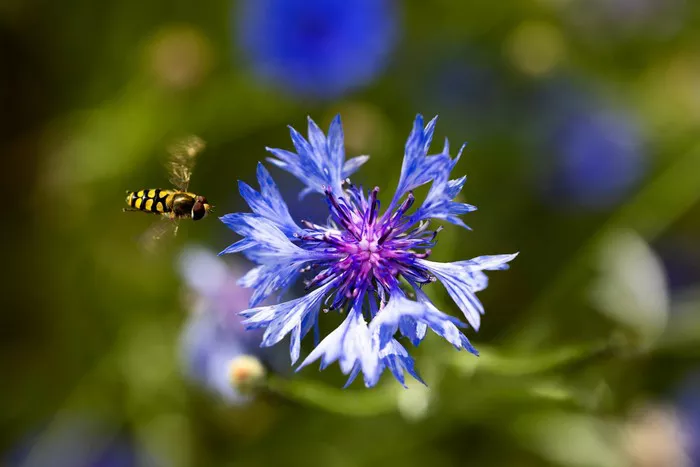Hummingbirds are enchanting creatures known for their vibrant colors, rapid wing beats, and love for nectar-rich flowers. If you want to attract these delightful birds to your garden or yard, it’s essential to understand which flowers they prefer.
The Fascination of Hummingbirds and Flowers
Hummingbirds are primarily nectar-feeding birds, and flowers are their primary source of sustenance. The relationship between hummingbirds and flowers is a fascinating example of mutualism – the birds benefit from the nectar, while the flowers are pollinated as the hummingbirds move from one blossom to another. This intricate dance between hummingbirds and flowers has evolved over millions of years, resulting in a remarkable coexistence.
Characteristics of Hummingbird-Friendly Flowers
To attract hummingbirds to your garden, it’s crucial to select flowers that possess specific characteristics that appeal to these tiny birds. Here are some key attributes of hummingbird-friendly flowers:
a. Brightly Colored Petals: Hummingbirds are drawn to bright, vividly colored flowers, particularly shades of red, orange, and pink. These colors stand out in the landscape and are easily spotted by these birds.
b. Tubular Shape: Flowers with tubular shapes are ideal for hummingbirds as they allow the birds to insert their long, specialized bills to access nectar deep within the blossom.
c. Abundant Nectar: Hummingbirds have incredibly high metabolisms and require a significant amount of nectar to fuel their energy. Flowers with ample nectar reserves are more likely to attract these birds.
d. Constant Blooms: Hummingbirds are constantly on the lookout for food. Flowers that bloom throughout the growing season are more likely to provide a consistent food source for these birds.
e. Fragrance: While hummingbirds primarily rely on visual cues, some flowers emit a sweet fragrance that can further attract them.
Popular Hummingbird-Friendly Flower Varieties
There is a wide array of flowers that hummingbirds find irresistible. Here are some popular options to consider for your hummingbird-friendly garden:
a. Trumpet Vine (Campsis radicans): This vigorous vine produces trumpet-shaped, orange-red flowers that hummingbirds adore. It can quickly cover fences and trellises, providing a profusion of blooms.
b. Bee Balm (Monarda spp.): Bee Balm, also known as Oswego tea, boasts vibrant red, pink, or purple blooms. Its tubular flowers are a favorite of hummingbirds, and it also attracts bees and butterflies.
c. Red Hot Poker (Kniphofia uvaria): The striking spikes of red, orange, or yellow flowers make the Red Hot Poker a magnet for hummingbirds. These flowers add a touch of drama to any garden.
d. Salvia (Salvia spp.): Salvia species, particularly those with red or deep pink flowers, are beloved by hummingbirds. They bloom prolifically and are easy to grow in various climates.
e. Cardinal Flower (Lobelia cardinalis): With its brilliant scarlet blossoms, the Cardinal Flower is a hummingbird favorite. It thrives in wet or moist soil conditions, making it a versatile choice for different garden settings.
f. Agastache (Agastache spp.): Agastache, also known as hyssop, produces spiky clusters of tubular flowers in various colors. The nectar-rich blooms attract both hummingbirds and bees.
Planning a Hummingbird Garden
Creating a hummingbird-friendly garden requires thoughtful planning and placement of the right flowers. Here are some steps to help you design a garden that hummingbirds will flock to:
a. Choose a Sunny Location: Most hummingbird-friendly flowers thrive in full sun or partial shade. Select a spot in your garden that receives at least six hours of direct sunlight each day.
b. Create Layers: Incorporate plants of varying heights to create layers in your garden. Tall flowers like trumpet vines and red hot pokers can provide perching spots for hummingbirds.
c. Group Flowers Strategically: Plant clusters of hummingbird-friendly flowers together. This makes it easier for the birds to find and access the blooms.
d. Include Native Plants: Native plants are adapted to your region’s climate and are often more attractive to local wildlife, including hummingbirds.
e. Provide Water: Hummingbirds need water for drinking and bathing. Consider adding a shallow birdbath or a dripping water feature to your garden.
f. Minimize Pesticides: Avoid using pesticides in your garden, as they can harm hummingbirds and the insects they feed on.
Maintenance and Care
To ensure your hummingbird-friendly garden thrives, it’s essential to provide proper maintenance and care. Here are some tips:
a. Regularly Deadhead Flowers: Remove spent blooms to encourage continuous blooming throughout the season.
b. Mulch and Fertilize: Apply mulch to conserve moisture and use a balanced, slow-release fertilizer to promote healthy growth.
c. Monitor for Pests: Keep an eye out for pests and take appropriate measures to protect your plants.
d. Prune as Needed: Prune your plants as necessary to maintain their shape and size.
e. Winter Protection: In colder climates, protect your hummingbird-friendly plants from harsh winter conditions, if necessary.
Conclusion
Attracting hummingbirds to your garden can be a rewarding and awe-inspiring experience. By selecting the right flowers, planning a hummingbird-friendly garden, and providing proper care, you can create an inviting haven for these magnificent birds. Whether you’re a seasoned gardener or a novice, the vibrant colors and graceful antics of hummingbirds can add a touch of magic to your outdoor space. So, start planting those hummingbird-friendly flowers, and get ready to welcome these charming visitors to your garden.

